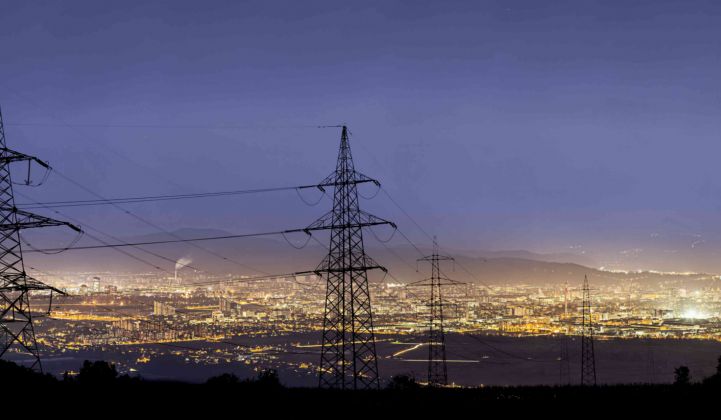Network operator UK Power Networks has confirmed it sees the Faraday Grid as “a revolutionary design” amid plans to test the technology from next year.
The claim is perhaps the most resounding endorsement to date of a mysterious transformer concept that has raised eyebrows since it was first unveiled in December 2017.
Edinburgh, Scotland-based company Faraday Grid said its eponymous grid design, equipped with so-called Faraday Exchangers in place of traditional transformers, would be able to handle up to 60 percent renewables without becoming unstable.
Although Faraday Grid has remained coy about the details of its technology, in May this year the company released test results that appeared to validate its claims.
This month, UK Power Networks innovation project manager Alex Davenport told GTM he believed the hyperbole around the technology was justified.
“The Faraday Grid is indeed a revolutionary design in that individual Faraday Exchangers communicate with each other autonomously, continuously adapting to variations in the network to maintain stability, providing inertia and primary frequency response,” he said.
This autonomous operation should make it possible to increase capacity across a network of Faraday Exchangers without adding additional control management, he said.
“The reverse flow capability of each individual Faraday Exchanger means the increasing prevalence of localized generation on distribution networks can be handled and managed where it cannot be with transformers,” Davenport claimed.
He said Faraday Exchangers could carry out all the functions of a traditional transformer and potentially also help with phase-balancing, harmonics removal, power factor corrections and voltage control over a much broader range of variation than is currently possible.
This might help distribution network operators such as UK Power Networks to relieve congestion, cut network losses, boost renewables capacity and bump up grid availability and capacity, said Davenport.
It could also increase the ability of the electricity network to manage growing levels of electric vehicle deployment, including support for vehicles exporting power to the grid. UK Power Networks is planning to start testing the Faraday Grid technology in early 2019.
“The project aims to demonstrate how a Faraday Grid will create a smart, flexible electricity system that increases the capacity to deliver more renewable energy, such as wind and solar power, at a lower cost to consumers,” said Faraday Grid in a press release.
Initial tests will be off-network and primarily focused on the safe and reliable operation of the Faraday Exchanger, replicating the tests a traditional transformer would go through, said Davenport.
“The aim here is to effectively manage and reduce the inherent risk of deploying new technology,” he said.
On-network testing is likely to begin in spring 2019, he said, with UK Power Networks keen to try the Exchanger out in urban, suburban and rural settings.
A key element of the tests will be to see how Exchangers communicate with each other, in order to determine how well they live up to the promise of eventually creating a Faraday Grid. UK Power Networks will also be looking to see if a Faraday Grid could in fact live up to the claims of its makers.
These include cutting the need for balancing services by an average of 40 percent, reducing net reactive power generation by an average of 34 percent and bringing the number of violated security constraints down by an average of 30 percent.
In theory, the Faraday Grid should also increase network carrying capacity by an average of 25 percent, cut energy losses by an average of 7 percent and reduce carbon emissions by an average of 3 percent.
Assuming off-network testing is satisfactory, the Faraday Exchangers will be evaluated operationally for a year before UK Power Networks commits to a wider rollout.
And if a rollout does go ahead, it is likely to be in the form of a gradual replacement of transformers reaching retirement age. “This technology can be deployed incrementally,” noted Davenport. “It's possible to build any deployment into regular procurement and replacement cycles and take a cost-efficient approach.”
In the meantime, Faraday Grid is looking to set up further demonstration partnerships “to showcase global application of the technology,” according to a spokesperson.
“Faraday is currently finalizing terms on a number of utility and ecosystem partnerships in Europe, North America and Asia-Pacific,” he said.




